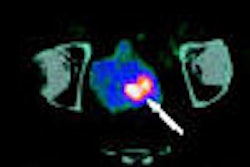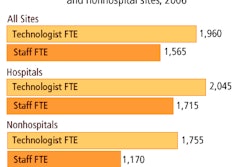CHICAGO - Using a digital comparison technique that rapidly alternates new and prior images in front of another can yield significant improvement in the detection of lesions, according to Dr. Matthew Kuhn of Southern Illinois University School of Medicine in Springfield, IL.
"The digital blink comparator technique may have some uses in helping us detect new abnormalities, particularly unexpected abnormalities, and also comparing new lesions to old lesions for change," Kuhn said. He presented the findings Sunday at the 2006 RSNA meeting in Chicago.
The "blink" comparator method alternates new and prior medical images superimposed digitally upon each other, rather than comparing them visually in the traditional side-by-side or up-down fashion.
To test the technique, two radiologists were separately presented with 80 pairs of various types of radiologic images containing abnormalities in a conventional series and stack format typical of contemporary PACS workstation styles. The image pairs included plain computed radiography (CR), CT, or MR images obtained from the same patient at different times.
Each radiologist first noted abnormalities and any changes seen between the old and new images. The images were then subsequently viewed separately by the same radiologist using the digital comparator technique, in which images were rapidly superimposed upon each in a fashion that caused changes to "blink" on and off for five seconds in front of the interpreter.
Using conventional PACS interpretation techniques, the two radiologists detected 185 and 197 abnormalities, respectively. Employing the digital blink comparator technique, the radiologists identified 223 (an improvement of 20.5%), and 235 (an improvement of 17.8%), respectively. Almost 10% of the reports would have been changed as a result, Kuhn said.
Radiologists may be subject to satisfaction of search errors, in which they find what they think they're looking for and then halt their search patterns and stop looking for unexpected findings, Kuhn said. The blink comparator technique can help illuminate these unexpected findings.
"Also, perfect image registration is not necessary to the human eye and to the human brain, unlike computer methods in which perfect image fusion is more important," Kuhn said. "We're able to accommodate for even moderate differences in registration."
By Erik L. Ridley
AuntMinnie.com staff writer
November 26, 2006
Related Reading
RIS/PACS reduces x-ray exam time, September 21, 2006
Filmless OR increases efficiency, workflow, August 29, 2006
Exam reconciliation tool improves PACS error handling, August 28, 2006
Part XII: Exploring PACS Secrets -- PACS and marriage, August 15, 2006
New workflow, personnel needed for adopting digital mammography, August 10, 2006
Copyright © 2006 AuntMinnie.com



















